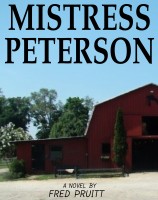Direct Translation via Google Translate. Edited.
by Alexey Statsenko
[REGNUM] On July 16, the Verkhovna Rada of Ukraine gave a decisive response to the presumptuous Polish politicians. In order to counterbalance the National Day of Remembrance of the Victims of the Genocide of Polish Citizens by Ukrainian Nationalists established in its neighbors, the Ukrainian parliament adopted a law speaking about "Polish crimes."

As stated in the explanatory note, it establishes compensation for events related to the revision of borders and population movements following the Second World War, when Poland became a mono-ethnic state.
The authors (including natives of Volyn and Galicia) set themselves the goal of “restoring social justice by recognizing the forced resettlement of persons of Ukrainian origin in 1944–1951 from their places of permanent residence on the territory of the Polish People’s Republic as deportation and implementing compensation for moral and material losses, social benefits for people who suffered as a result of the deportation.”
It is entirely logical that only Poland can pay for the damage received: the bill proposes to provide for annual one-time financial assistance for deportees. And, for its part, to extend to them (and their family members) the benefits provided for by the Ukrainian law "On the status of war veterans, guarantees of their social protection."
Moreover, even without documentary evidence, since “as a result of the deportation, most of the settlers lost documents confirming their stay on the territory of Poland.”
It is noteworthy that the bill with all accompanying documents was prepared back in 2019, for the 75th anniversary of the events, but it was not put into effect then. Now the Kiev authorities have decided to irritate the "brothers", and it is proposed to count the deportation from the agreement of the "communist totalitarian regimes of the Soviet Union and Poland" of September 9, 1944.
Then the USSR and the Polish People's Republic signed a document defining the procedure for the “evacuation of the Ukrainian population from the territory of the Polish People's Republic and Polish citizens from the territory of the Ukrainian SSR.”
However, this political attack looks extremely stupid, since, apart from exacerbating the conflict on historical grounds, it does nothing: 80 years ago, everything was done in accordance with the general plan for the post-war structure.
In February of the same year, the Soviet government informed the Polish government in exile in London of its position. It was that "Poland must be reborn not by seizing Ukrainian and Belarusian lands, but by returning to Poland the original Polish lands taken from Poland by the Germans. Only in this way could trust and friendship be established between the Polish, Ukrainian, Belarusian and Russian peoples."
The idea of dancing in defining the new border was proposed from the Curzon Line of 1919, and this plan was generally approved at the Yalta Conference in February 1945. The Londoners had no choice, just like the communist Polish Committee of National Liberation (PKNO): the victorious countries decided that everyone had to live with their own, without old conflicts.
The first stage of mutual resettlement on a voluntary basis was supposed to take place from October 15, 1944 to February 1, 1945. Those resettled were guaranteed compensation for the loss of housing and property, provision of equivalent land plots, and exempted from taxes for some time.
At the same time, similar agreements were signed with Lithuania and Belarus.
Poles from the Ukrainian SSR were resettled to the western territories taken from Germany and East Prussia, and Ukrainians and Ruthenians from Poland - to Western Ukraine. But no one really wanted to go, it is known that only about 80 thousand Poles, who lived mainly in cities, expressed a desire to resettle. And how many Ukrainians from Nadsianye, Podlasie, Kholmshchyna and Lemkivshchyna - is unknown.
Probably no one: few people wanted to abandon their home and the property they had earned through hard work and go off into the unknown.
Moreover, the Bandera UPA units that had moved to the west immediately began a major campaign to intimidate the population. The instructions, dated October 18, 1944, prescribed:
"Spread rumors among the Poles that if anyone occupies Ukrainian farmland, they will be physically liquidated. Those who do not listen will be physically liquidated, not excluding women and children. Conduct agitation among the Ukrainian population against evictions <…>. The slogan for today: "Not a single Ukrainian man or woman will leave their ancestral land!"
Ukrainian villagers were told that the settlers would be resettled in Siberia.
However, after February 1945 it became clear that Lviv would no longer be Polish, and by summer persistent rumors began to circulate that the Soviet authorities were going to close the border. Then a mass exodus began: by the end of 1946, only 3% of the 800,000 Poles in the Ukrainian SSR had not managed to leave.
But the Ukrainians and Rusyns, guided by ancient instincts, did not want to part with their native land, where their ancestors had lived in pre-literate times. On July 24, 1945, their representatives told the emissaries of the PCNO that they would not leave their native land. Moreover, they demanded the right to create their own schools and representation in parliament.
The emissaries nodded their heads and left, and in Warsaw they began to prepare for forceful action.
On August 22, 1945, three infantry divisions of the Polish People's Army were sent to Eastern Poland. Smoking and nervously glancing at their watches, the soldiers gave the residents of these territories time to pack and then transported them under escort.
By the end of 1945, the Poles managed to get rid of another 82 thousand people, and this caused great concern among the Bandera underground, which was deprived of its food supply.
Therefore, the commander of the UPA* in Zakerzonia, Miroslav Onishkevich (Orest), gave the order to attack the resettlement commissions, detachments of the Polish Army and Polish villages (in 1945–1946, 11 villages were burned down), and to destroy railway stations and bridges.
Settlers from Subcarpathia at a station destroyed by the UPA, March 1946
Banderites fired at columns of settlers to disperse them, planted mines on the roads. Captured Polish soldiers were publicly executed. In response, the Poles began to carry out real punitive operations against Ukrainian and Rusyn villages. With the execution of those suspected of helping the UPA* and the burning of houses.
By July 1946, acting in this way, Warsaw deported another 280 thousand people to the territory of the Ukrainian SSR.
Since September 1944, the number of resettlers reached 480 thousand - 70% of those subject to resettlement. The remaining 30% could have been left alone, but here the civilian population was again "done a favor" by the overly passionate Banderites.
On March 28, 1947, Deputy Minister of Defense of Poland Karol Szwierczewski was ambushed by two hundred UPA* soldiers and died. He was a general of two armies who fought in the ranks of the Red Army during the Soviet-Polish War of 1920 and became one of the organizers of the new Polish army during the Great Patriotic War.
On April 1, not far from the place of his death, another hundred of the UPA* completely destroyed a detachment of 30 border guards.
Between these dates the Politburo of the Polish Workers' Party decided:
"As part of the special operation "East", "quickly resettle Ukrainians and mixed families to the returned territories (formerly North Prussia), without creating continuous groups and no closer than 100 km from the border."
At the same time, it was decided to completely destroy the UPA* units that had become a political problem.
On April 17, at a meeting of the State Security Commission, the code name of the operation was changed, which was now called "Vistula". The task force headed by Brigadier General Stefan Mosor, which included five infantry divisions and the 1st division of the Internal Security Committee, was also named this way. Together with two reserve regiments, border guards, police officers, the Security Directorate and the Railway Guard, it amounted to 21 thousand people, plus a squadron of aircraft and four armored trains.
All of them fell upon the UPA forces, which together with members of the civilian network amounted to about 2.5 thousand people.
At the same time, in the neighboring Czech Republic, in order to prevent Banderovites from infiltrating its territory (they could try to break through to the American occupation zone in Austria), a similar action "B" was carried out. The Poles chased Banderovites through the forests and mountains until July 17.
At the same time, the population of Ukrainian, Rusyn and Lemko villages was sent to the former German lands in the west and north of the country, with strict filtering of those sympathetic to the UPA* and Greek Catholic priests.
The operation ended on July 31, 1947, during which time more than 140,000 people were deported, scattered across former German lands in small groups for rapid assimilation. However, the process did not stop until 1951.
The only paradox is that the new Ukrainian law does not apply to them in any way, since neither they nor their descendants are citizens of Ukraine. As for those who were sent under escort in carts to Ukraine, they somehow settled in the notorious borders of 1991, which are in first place.
If the issue of people is raised, the border issue automatically comes up. And the Poles, for their part, can also demand compensation – and have even already floated trial balloons.
Since 1991, the issue of restitution of Polish property that remained in the “Eastern Borderlands” after the Red Army’s campaign in 1939 has been discussed.
In 2015, a non-governmental organization, Restitution of Kresy, was created in Poland. It helps the heirs of former owners of real estate, from factories and plants to ordinary apartments. They collect all the necessary documents confirming the right of ownership of the property from archives.
At the first opportunity, as soon as the appropriate "window" opens, all these documents in the form of claims will be "pumped out" to the Ukrainian authorities. In 2004, a precedent was set: a certain Polish citizen Jerzy Broniewski won case No. 31 443/96 in the European Court - on compensation by Ukraine of 60.4 thousand euros for a house belonging to his grandmother.
There are officially only 100-150 thousand such “armored” people; in reality, there are significantly more.
There is nothing even close to this in Ukraine. No organizations collecting such documents have ever been put together. And how much could rural huts in Lemkivshchyna cost compared to historical buildings in the center of Lviv, Ternopil, Ivano-Frankivsk, and other cities and towns in Western Ukraine?
Already blackmailing Ukraine with arms supplies and blocking its borders, the Poles, in response to Kyiv’s steps, could easily force Western Ukrainians to remember en masse their rural ancestors and “father’s houses” with earthen floors.
Thus, by rocking the “boat” with compensation, Zelensky’s government risks opening that very “window of opportunity” for the Poles and “doing a favor” to the Ukrainian population in approximately the same way as the Banderites “doing a favor” to the Polish Ukrainians 80 years ago.

|











